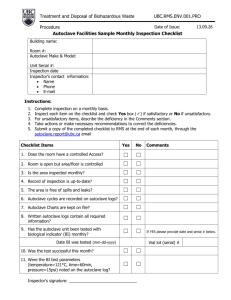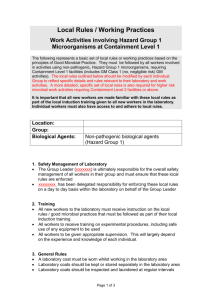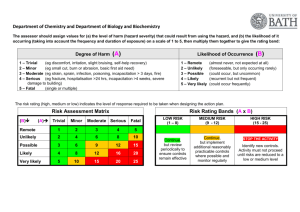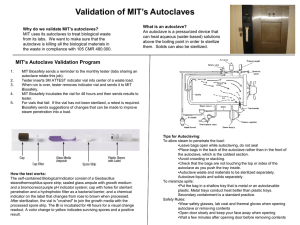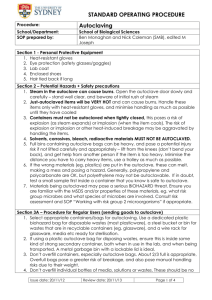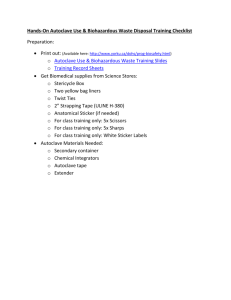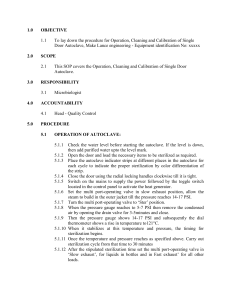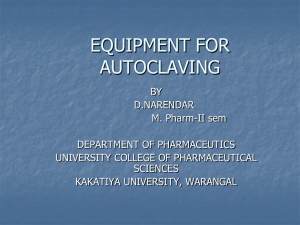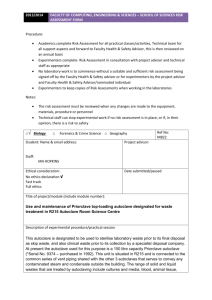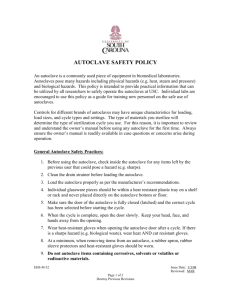RECOMMENDED PROCEDURES FOR AUTOCLAVING MATERIALS
advertisement
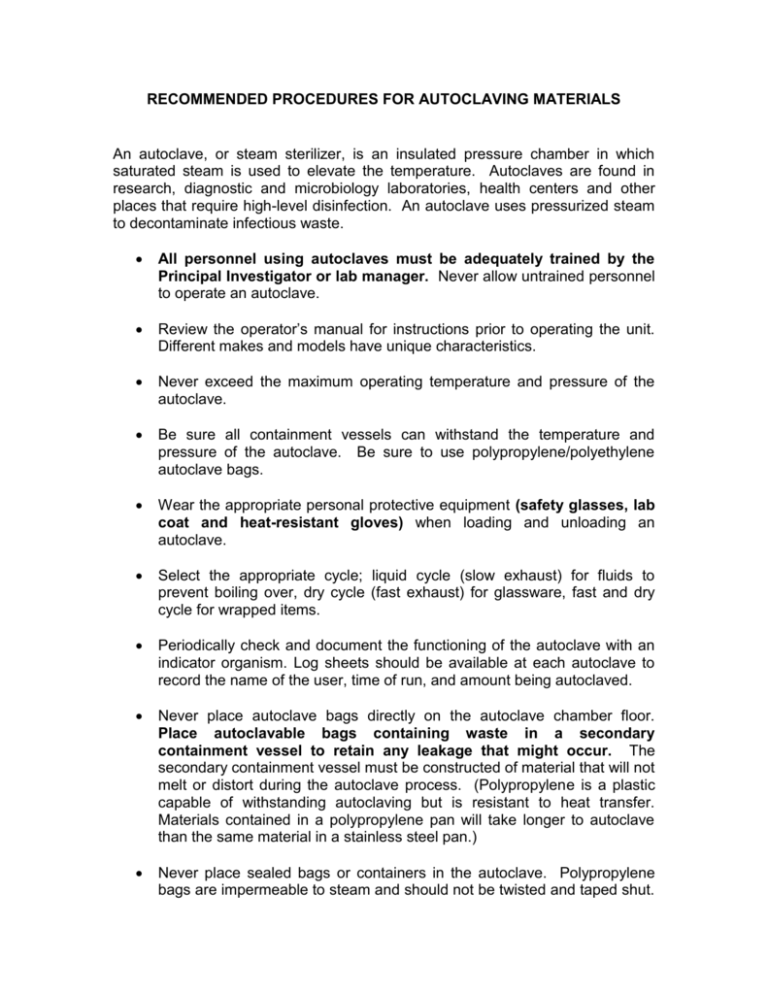
RECOMMENDED PROCEDURES FOR AUTOCLAVING MATERIALS An autoclave, or steam sterilizer, is an insulated pressure chamber in which saturated steam is used to elevate the temperature. Autoclaves are found in research, diagnostic and microbiology laboratories, health centers and other places that require high-level disinfection. An autoclave uses pressurized steam to decontaminate infectious waste. All personnel using autoclaves must be adequately trained by the Principal Investigator or lab manager. Never allow untrained personnel to operate an autoclave. Review the operator’s manual for instructions prior to operating the unit. Different makes and models have unique characteristics. Never exceed the maximum operating temperature and pressure of the autoclave. Be sure all containment vessels can withstand the temperature and pressure of the autoclave. Be sure to use polypropylene/polyethylene autoclave bags. Wear the appropriate personal protective equipment (safety glasses, lab coat and heat-resistant gloves) when loading and unloading an autoclave. Select the appropriate cycle; liquid cycle (slow exhaust) for fluids to prevent boiling over, dry cycle (fast exhaust) for glassware, fast and dry cycle for wrapped items. Periodically check and document the functioning of the autoclave with an indicator organism. Log sheets should be available at each autoclave to record the name of the user, time of run, and amount being autoclaved. Never place autoclave bags directly on the autoclave chamber floor. Place autoclavable bags containing waste in a secondary containment vessel to retain any leakage that might occur. The secondary containment vessel must be constructed of material that will not melt or distort during the autoclave process. (Polypropylene is a plastic capable of withstanding autoclaving but is resistant to heat transfer. Materials contained in a polypropylene pan will take longer to autoclave than the same material in a stainless steel pan.) Never place sealed bags or containers in the autoclave. Polypropylene bags are impermeable to steam and should not be twisted and taped shut. Secure the top of containers and bags loosely to allow steam penetration. Leave space between items in the autoclave bag to allow steam penetration. Fill liquid containers only half full, loosen caps or use vented closures. For materials with a high insulating capacity (animal bedding, saturated absorbent, etc.) increase the time needed for the load to reach sterilizing temperatures. Never autoclave sealed containers, animal carcasses, bleach-treated waste, or items contaminated with flammables, corrosives, reactives, cytotoxic drugs, reproductive and carcinogenic hazards, volatile chemicals or radioactive materials. Doing so can create hazardous conditions. Very few chemicals are considered acceptable to autoclave. Dry hypochlorites, or any other strong oxidizing material must not be autoclaved with organic materials such as paper, cloth or oil: OXIDIZER + ORGANIC MATERIAL + HEAT = MAY PRODUCE AN EXPLOSION. Always make sure that the pressure of the autoclave chamber is at zero before opening the door. Stand behind the autoclave door and slowly open it (only a crack) to allow the steam to gradually escape from the autoclave chamber after cycle completion. Allow liquid materials inside the autoclave to cool down for 15 – 20 minutes prior to their removal. Never leave an autoclave in operation unattended (do not start a cycle prior to leaving for the evening). Dispose of all autoclaved waste through the biohazard/infectious waste stream. (red bags/containers)


